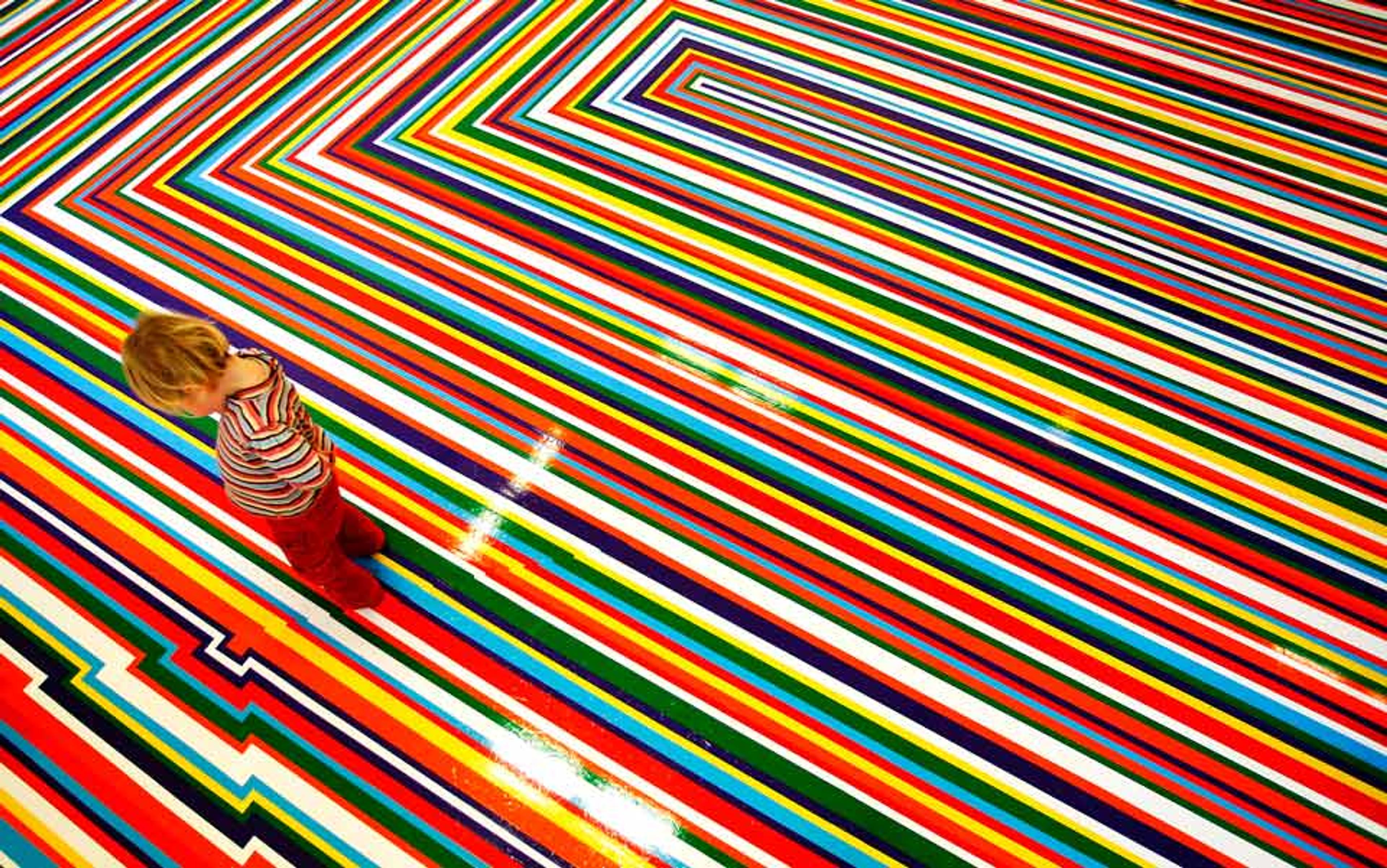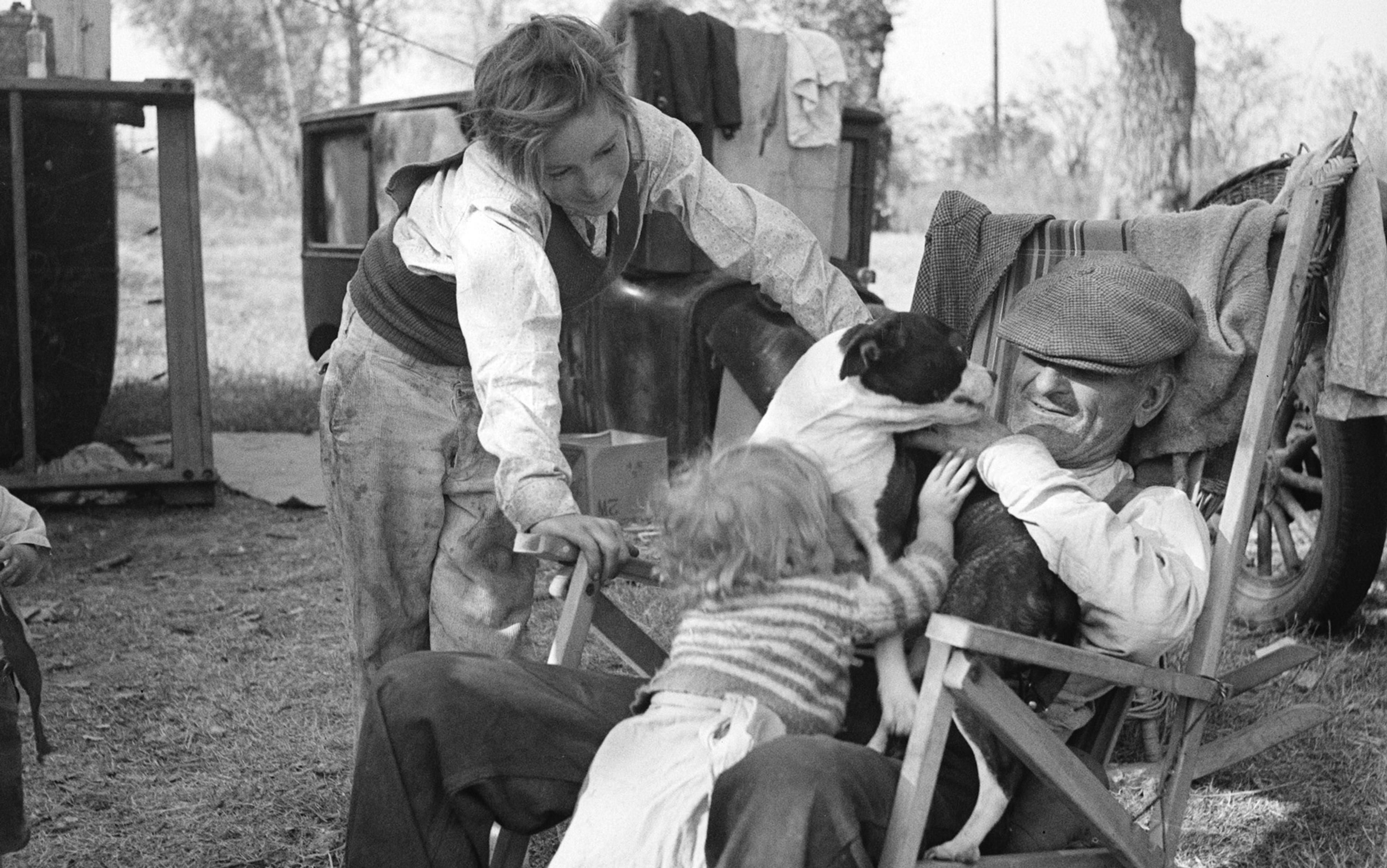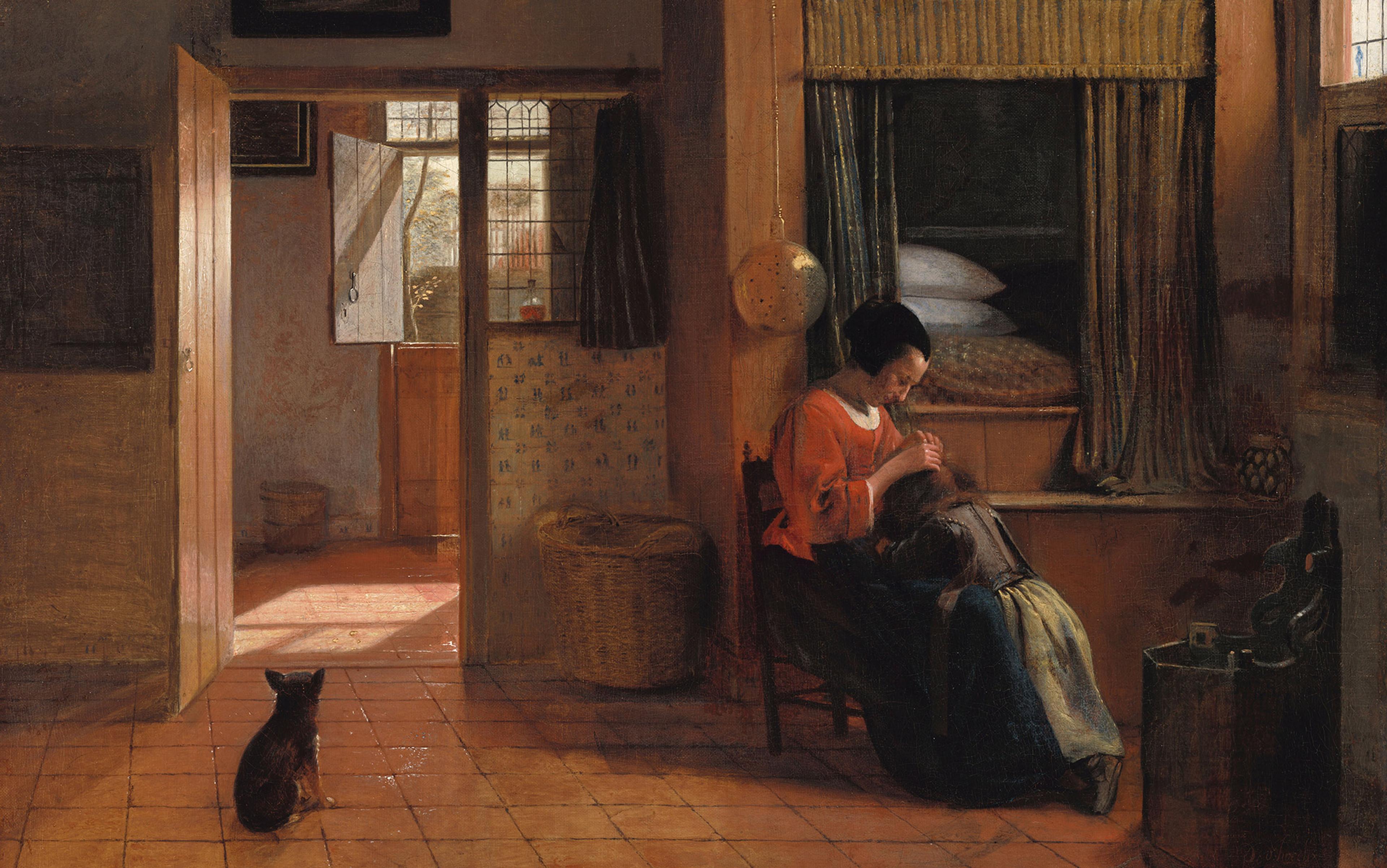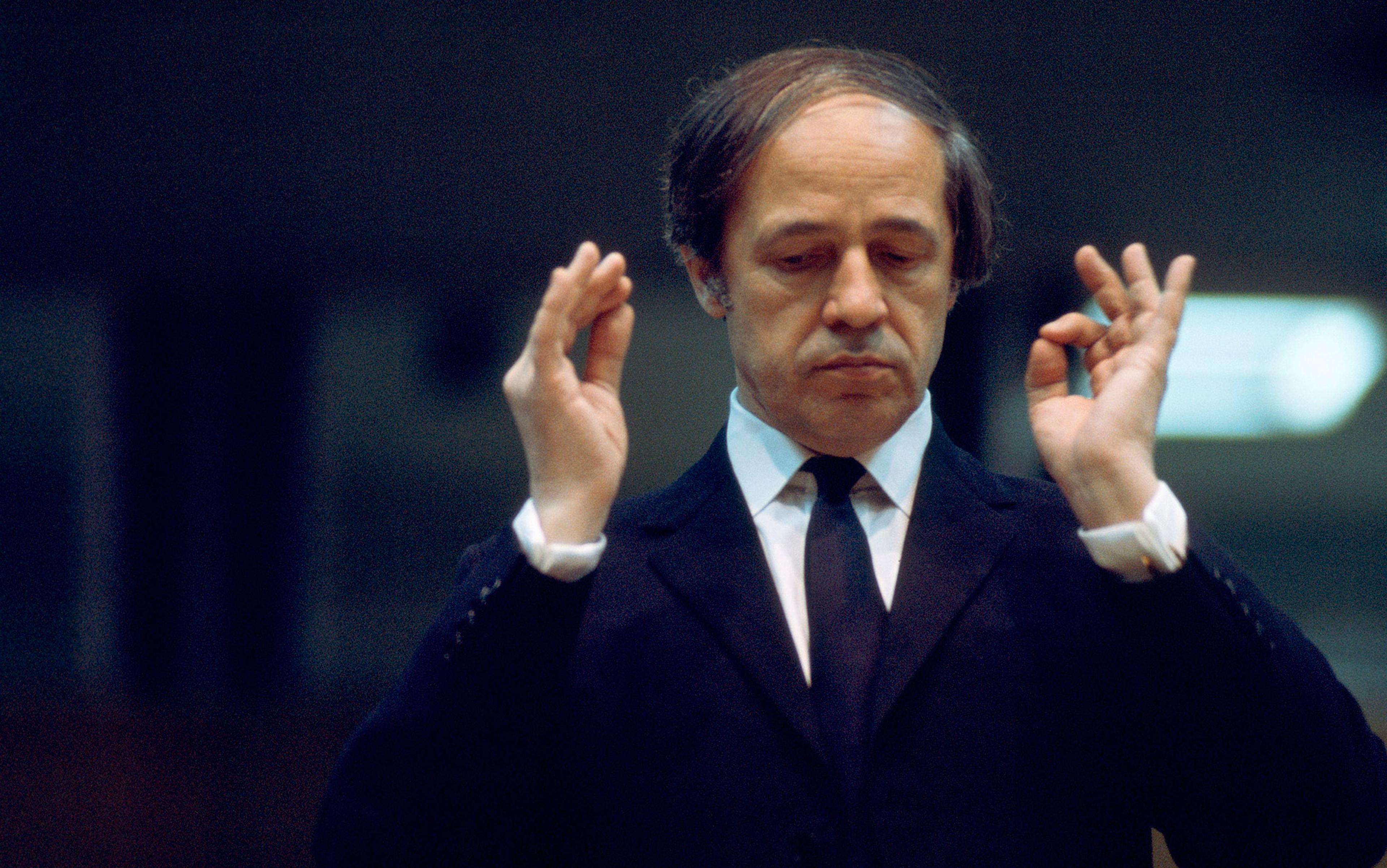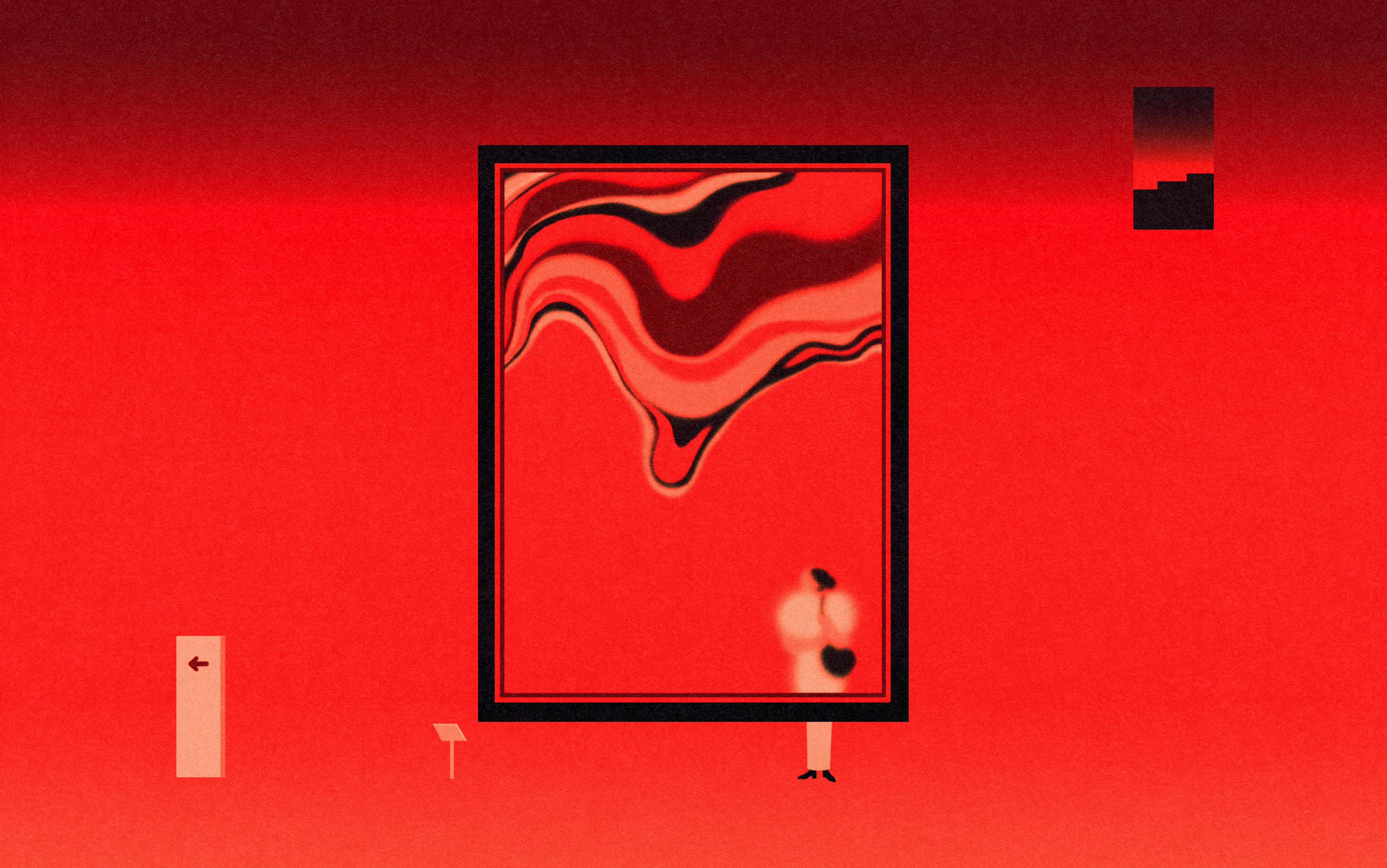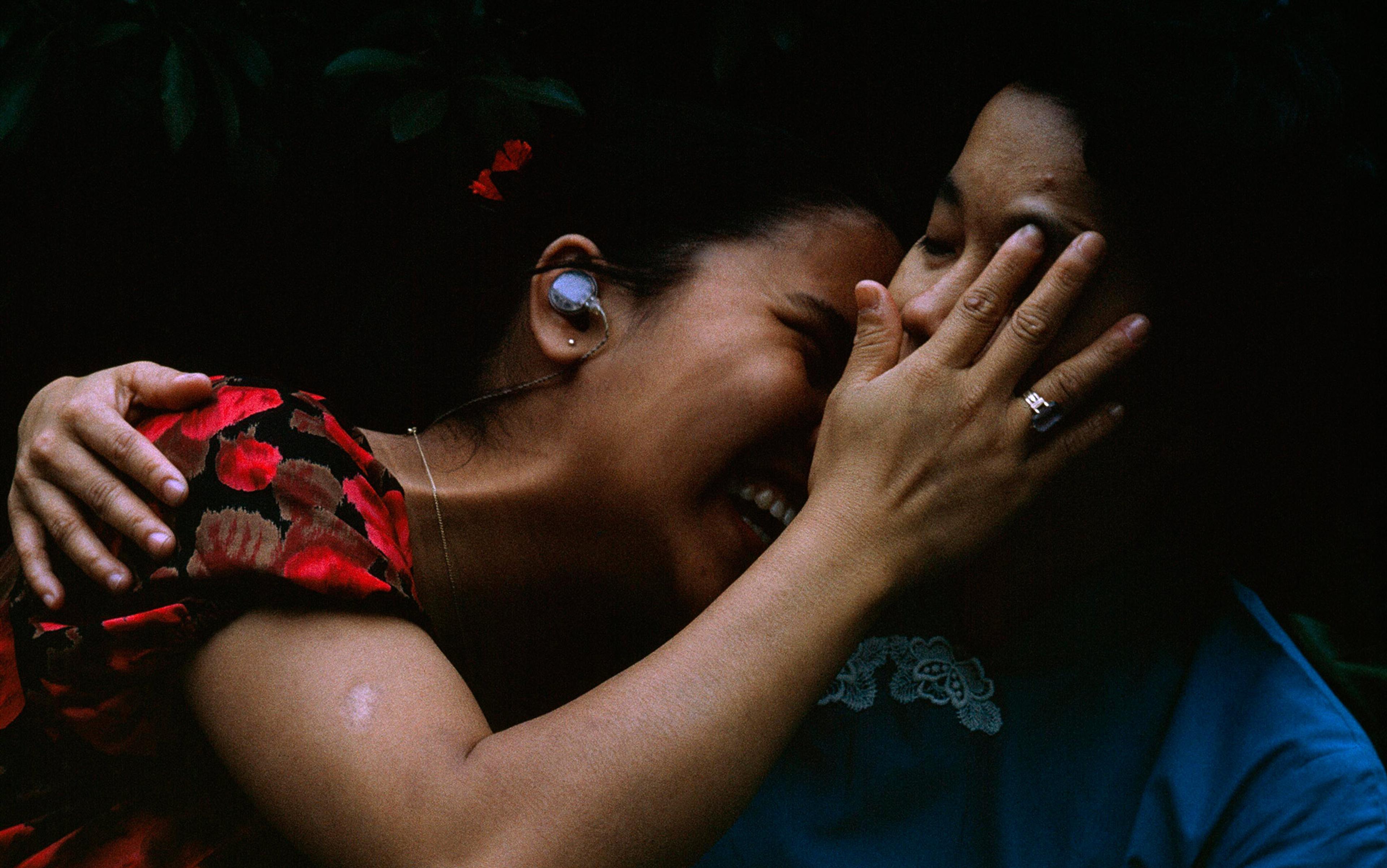In every culture on Earth, people decorate their possessions and themselves, and enjoy visual art. They stare in awe at vast landscapes and the starry sky, and they sing and dance, and make instrumental music. Why? The answer seems obvious: it gives them pleasure. But why should it? What benefit does the capacity for aesthetic pleasure bestow on the human organism?
We know that aesthetic pleasure isn’t just a drive, like hunger or sexual desire. Hunger is prospective: it urges us to eat. Pleasure, on the other hand, accompanies eating. It tells us ‘Keep eating this!’ But eating should not continue indefinitely, and so once the body is sated, pleasure fades. The fuller you are, the less pleasant it is to eat, no matter how delicious the food. Like many drive-associated pleasures, hunger has a characteristic time-profile. Being hungry is unpleasant; being very hungry is exceedingly so. When you eat, you relieve the distress of hunger and begin to take pleasure in the food itself (if it is tasty). As you become sated, the pleasure dies away. Sexual pleasure has a similar profile, though of course its regulatory role is a good bit more complex.
Eating and sex are drive-related pleasures, but we experience other kinds of pleasures, too. Consider cuddling. There is no drive to cuddle a loved one. There is no increasingly unpleasant hormonal build-up that impels you; unlike hunger or sex, it isn’t brought on by deprivation. Nor is there any orgasmic satiation point. Cuddling has a relatively flat time-pleasure profile. Of course, nobody goes on cuddling forever. But this is because other urges take over, or because they become sleepy or tire of it. Pleasure encourages the activity independently of any immediate result.
Aesthetic pleasure is activity-focused, like cuddling, not drive-actuated or end-directed, like eating. The activity it accompanies is what I would generically call ‘contemplation’. You are listening to an aria by Rossini or the sound of a nightingale; you are looking at the Rocky Mountains or a painting by Ingres: aesthetic pleasure tells you that this contemplative engagement is worthwhile, to keep on doing it – but not for some immediate result. By contrast I can take pleasure in looking at the Rocky Mountains for different reasons – that are not aesthetic. Catching sight of the Mountains, I might be elated that my long journey to the ski-slopes is finally coming to an end. Aesthetic pleasure by contrast, is pleasure in just looking at something, or listening to it, or pleasure in contemplating its qualities. Aesthetic pleasure motivates you to keep looking; it doesn’t tell you that the object of your contemplation is good for anything other than contemplation.
Activity-focused pleasures can elicit characteristic bodily or behavioural responses. They might express themselves involuntarily in the face by a soft expression or smile. Psychologically, they focus attention on the pleasurable activity; one tends to ‘get lost’ in the beauty of the starry sky or in Van Gogh’s version, and other concerns, including worries and pain, tend to recede. This dreaminess or absorption is mediated by endogenously secreted opioids, which also bring on feelings of pleasure. These effects are characteristic of what we might call physical pleasure, and we should recognise that some intellectual pleasures – a book, a Sudoku puzzle, friendly conversation – elicit physical pleasure. And so does aesthetic pleasure.
Whether drive-related or activity-focused, pleasure gives us information about things in the world – but its messages are relevant only to a specific activity. The pleasant taste of a mango tells me that it is good to eat when I am hungry, but it doesn’t tell me anything about other activities that I could undertake with mangoes. It doesn’t tell me, for instance, that a mango is a good thing to apply to a wound (as certain leaves are) or that it is good to look at. Similarly, a person with whom one cuddles isn’t necessarily one with whom one wants to have sex (eg, one’s sibling) or conversation (eg, one’s dog). A book that makes for good reading might not look good on a shelf. Pleasure in a particular object for a particular purpose does not necessarily translate into generalised approval.
The specificity of pleasure might seem obvious, but some writers on aesthetic pleasure miss this point. Aesthetic pleasure is pleasure in contemplating something. This pleasure could be sensory, like the enjoyment one derives from looking at a painting or listening to music. Or it could be intellectual, like the pleasure of reading the latest Robert Harris. In both cases, pleasure in contemplation has to be distinguished from wanting an object for other uses. Immanuel Kant in the 18th century was among the first to understand this. His example was that of a palace. You might long to live in it, or you might hate it for its extravagance and want to destroy it. But both of these responses are distinct from the pleasure or displeasure derived from merely looking at it. Only the latter pleasure counts as aesthetic.
Darwin wrongly equates the lustful gaze with simple looking. Kant’s point was that aesthetic appreciation is disinterested
Discussing sexual selection, Charles Darwin wrote: ‘When we behold a male bird elaborately displaying his graceful plumes or splendid colours before the female … it is impossible to doubt that she admires the beauty of her male partner.’ Assuming that he really means beauty, and not sexual attractiveness, this is a mistake. It confuses sexual desire with aesthetic admiration. According to Darwin’s own theory, when a female looks at a male that way, she is not getting pleasure from looking at him for the sake of looking at him; rather, she is driven to mate with him. Darwin wrongly equates the lustful gaze with simple looking. Kant’s point was that aesthetic appreciation is disinterested. It is pleasure just in looking.
This brings me back to the puzzle. Aesthetic pleasure encourages us to contemplate its object. But why is this good, from an evolutionary point of view? Why is it valuable to be absorbed in contemplation, with all the attendant dangers of reduced vigilance? Wasting time and energy puts organisms at an evolutionary disadvantage. For large animals such as us, unnecessary activity is particularly expensive.
The answer might lie in our modes of perception. Our perceptual receptors receive a ‘booming, buzzing confusion’ of stimulation. Vision gives us two slightly differing two-dimensional images; hearing gives us two sound images, each a summation of sonic emissions from many different sources. These images change from moment to moment, as the perceiver’s position as well as external circumstances change. Yet, perception delivers to our consciousness a remarkably clear and coherent presentation of discrete objects arrayed in three-dimensional space. This happens even in bad conditions, such as darkness or fog, or in chaotic soundscapes such as parties and concerts. In a huge range of conditions, many inimical to receiving information, perceivers have an extraordinary ability to construct a stable and coherent image of the world.
To do this the visual system has to be sensitive to pattern and order, to be able to sniff out signs of significant objects and events. Finding such patterns comes naturally to us, but like other natural activities it requires practice. Perception is a skill that has to be developed by repetition. Think of motor skills. Animals and humans play and roughhouse to develop skills, and evolution has made it pleasurable to do so. Similarly, infants babble, then talk … and talk, and talk. They don’t do this to communicate. They do it to play, and by this play they acquire the capacity to communicate.
It is the same with perception. As the psychologist Daniel Berlyne noted in the 1960s, infants begin perceiving by staring, and cocking their heads to listen, to take in simple patterns. As they grow older, they become interested in more and more complex displays, staring with special fascination at incongruities, asymmetries, and the like. This is perceptual play, and it develops perceptual skill. As we grow to adulthood, the patterns that give us pleasure are more complex than those that first entranced us. As infants, we might stare at checkerboards; as adults, we are moved by the mysteries of complex landscapes and the star-filled expanse of the sky.
Aesthetic pleasure is the fun of perceptual play, and it is valuable because it develops perceptual skill. This complements a suggestion made by the British neuroscientist Semir Zeki: art, he wrote in 1998, is a search for ‘the constant, lasting, essential and enduring features of objects, surfaces, faces, situations’. The objects we pleasurably gaze at are those that afford us a rich field for such a search. We begin our lives by taking pleasure in looking and listening to things, which is how we learn to perceive.
What motivates individuals to take on the unpleasant practice needed to improve their skills to the extraordinary levels art demands?
It is not yet clear why adults should find perceptual play fun. Aren’t we done learning how to perceive? Everyone achieves a certain basic level of skill in characteristically human activities: walking, talking, looking, listening, and singing. We do this by pleasurable play when young, and we maintain these skills with practice well into adulthood. But with each of these activities, the human body affords us the capacity to improve – to become extraordinarily skilled. Spontaneously developed language and motor skills are adequate for most purposes, but they are far below those of the most accomplished performers. An accomplished poet or playwright has a command of language that comes from repetition, practice, and instruction. She comes to this level of expertise with great difficulty. The same goes for somebody who appreciates poetry with hard-won knowledge of context and allusion.
Basic skills are achieved by pleasurable activity, extraordinary skills by painful and difficult activity. The activity by which an accomplished artist improves and maintains her skill is arduous, not spontaneous. Nonetheless, there is a kind of pleasure that comes with high levels of skill as well.
Somebody who is practising to reach a level of skill beyond what her current achievements usually experiences displeasure along the way. Let’s say she’s a pianist practising Chopin’s Études. She is dissatisfied when she plays them at the skill level she has already achieved, and this is why she wants to improve. But when she tries to play them better – faster, more evenly, with more power – she finds that her fluency is poor. She has to break established habits in order to achieve a higher level of performance. Her teacher might introduce her to new techniques to help, or she could try them out on her own accord, or even (if she is truly outstanding) invent them. But when she uses these new techniques, she has to think step by step about what she is doing, which is stressful, and she constantly fails. These are painful experiences, but when she is finally able to play at the skill level she is aiming for, she plays fluently and what she plays sounds good to her. As the Florida State University psychologist K Anders Ericsson has found, pleasure in performance happens when skill matches aspiration. But achieving aspirational levels can be extremely difficult, involving life-changing sacrifices and dedication.
What motivates individuals to take on the unpleasant practice needed to improve their skills to the extraordinary levels art demands? Partly ambition, of course, and the desire to achieve easy fluency, however unpleasant the process of achieving it might be. But human cultures have also invented a motivating device – interactive play. In the realm of motor play, sports and games fulfil this role – winning is an artificially created achievement that motivates individuals to become better. In the case of aesthetic activity, there is art, which is an interaction between maker and consumer. The maker skilfully creates something that challenges the perceptual discrimination of the consumer; by improving her discriminatory abilities, the consumer challenges the creative capacity of the maker.
Here is a parable to illustrate the process. Suppose that a primitive maker of cloth decorates her product with a complex design. As it turns out, everybody else in the community shares in the perceptual pleasure she enables, which gives her an economic incentive to produce more patterned cloth. Maybe others copy her as well, and insinuate themselves into her domain. At this point, repeated perceptual attention to the pattern will induce in consumers a greater sensitivity to the subtleties of patterned cloth. Thus, consumers (including the maker herself) become sensitised to imperfections in the patterns – perhaps the spatial interval is not perfectly even, or perhaps the repeated element is not exactly the same throughout. This gives producers the incentive to improve their skills and, because they invest in beauty, it gives consumers an incentive to improve their skills of discrimination. The result is a virtuous spiral in the co-development of perceptual and productive skills.
The Renaissance art historian Michael Baxandall wrote in 1972 that taste is ‘the conformity between discriminations demanded by a painting and skills of discrimination possessed by the beholder’. Looking at a great painting, he said, ‘a man with intellectual self-respect [is] in no position to remain quite passive; he [is] obliged to discriminate’. This interaction between artist and beholder is the cultural context that drives both making and perceiving to ever higher levels.
Art then, is a cultural institution that channels and transforms our capacity for aesthetic pleasure, from a developmental tool, first glimpsed in infant perceptual play, into something complex and grand. Something worthy of being called beauty.
